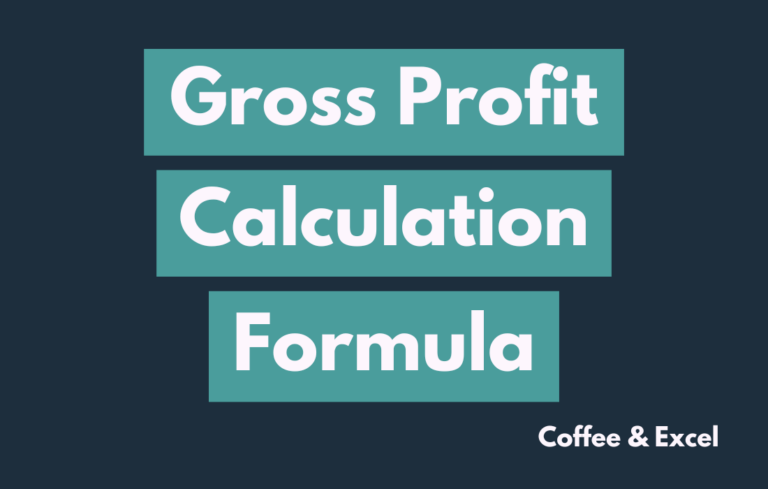Loan Agreements: Maximize Small Business Growth

Understanding Loan Agreements
Loan agreements are foundational tools for financing that can propel small business growth. They provide structure and legal framework for borrowing, which is essential for managing financial resources effectively.
Key Components
A loan agreement is a legally binding contract that includes several key components necessary for defining the relationship between a lender and a borrower. According to LegalNature, these components typically encompass:
- Loan Amount: The total sum of money being borrowed.
- Interest Rate: The percentage charged by the lender for the use of its money.
- Repayment Terms: The schedule and conditions under which the loan must be repaid.
- Collateral/Security: Any assets pledged by the borrower to secure the loan.
Understanding each component is crucial for borrowers, particularly small business owners who may be navigating the complexities of business loans and sba loans.
Importance of Terms and Conditions
The terms and conditions outlined in a loan agreement serve as the rulebook for the loan. They detail the obligations of each party, the provisions for managing late payments or defaults, and the consequences of failing to abide by the agreement. It is imperative that borrowers comprehend these terms to avoid any potential legal issues or financial setbacks.
For small business owners, terms and conditions can significantly impact the cost and flexibility of a loan. For instance, understanding the difference between secured and unsecured loans, the implications of interest rates, and the use of collateral can influence their decision-making. As such, they should utilize loan calculators to forecast repayment scenarios and assess how a loan aligns with their business growth strategies.
The table below outlines a few common terms and their definitions:
| Term | Definition |
|---|---|
| APR (Annual Percentage Rate) | The interest rate for a whole year rather than just a monthly fee/rate. |
| Default | Failure to repay the loan as agreed upon in the terms of the agreement. |
| Amortization | The process of spreading out a loan into a series of fixed payments over time. |
Small business owners should not only review but also negotiate these terms where possible, to ensure the loan serves the best interest of their business’s financial health. Seeking advice from a financial advisor or legal professional is always recommended, especially when delving into complex agreements such as commercial real estate loans or merchant cash advances.
In conclusion, understanding the key components and the significance of terms and conditions in loan agreements is paramount for small business owners looking to leverage financing as a tool for growth. It is the foundation upon which informed financial decisions are made, ensuring that both the immediate and long-term implications of borrowing align with the business’s objectives.
Types of Loan Agreements
For small business owners, understanding the different types of loan agreements is critical to securing the right financing for their business needs. Each loan agreement comes with its own set of terms, conditions, and uses, which can significantly impact the growth and financial health of a business.
Secured vs. Unsecured Loans
The distinction between secured and unsecured loans is a fundamental aspect of loan agreements.
- Secured Loans: These require the borrower to provide collateral, such as real estate or equipment, which the lender can claim if the borrower defaults on the loan. Secured loans tend to have lower interest rates due to reduced risk for the lender. More information about the differences can be found on secured vs unsecured loans.
- Unsecured Loans: These do not require collateral, but lenders typically compensate for the higher risk with higher interest rates and stricter eligibility requirements. The lender relies on the borrower’s creditworthiness and financial history.
| Loan Type | Collateral Required | Interest Rate | Risk to Borrower |
|---|---|---|---|
| Secured | Yes | Lower | Loss of assets |
| Unsecured | No | Higher | Credit damage |
Personal, Business, and Mortgage Loans
Loan agreements can vary significantly depending on their purpose. Here are three common types of loans:
- Personal Loans: Often used for smaller, personal expenses, these loans are usually unsecured and based on the borrower’s credit score. They have more straightforward terms and may not require extensive documentation.
- Business Loans: Specifically designed to fund business operations, they can be secured or unsecured. Business loans may include SBA loans, new business loans, franchise financing, and small business microloans. These loans often have more complex terms, including provisions for late payments and default.
- Mortgage Loans: Used to purchase real estate, these are typically secured by the property being financed. Mortgages have specific terms regarding repayment, interest rates, and what happens in the event of a default.
For small business owners, securing the right type of loan is crucial. Whether it’s a business line of credit, small business equipment loans, or commercial real estate loans, the loan agreement should align with the business’s objectives and repayment capacity. It’s also important to consider the loan’s purpose, such as bridging a short-term gap with bridge loans or managing cash flow with merchant cash advances.
Understanding the differences between these loans, their requirements, and their implications can help business owners make informed decisions and negotiate favorable terms. Additionally, using loan calculators can assist in understanding the financial impact of different loan options. For a comprehensive look at the options available, small business owners can explore the business loans overview and read small business loan stories for real-world insights.
Breaches and Remedies
When entering a loan agreement, it’s imperative for small business owners to understand what constitutes a breach and the potential remedies available should a breach occur. This knowledge is pivotal for both protecting their interests and ensuring they are fulfilling their own obligations under the loan agreement.
What Constitutes a Breach
A breach of contract in the context of loan agreements is when one party fails to uphold their end of the agreement as stipulated in the document. For a small business owner, this could include several actions such as not making timely loan payments, providing false or misleading information during the application process, or utilizing the loaned funds for purposes not authorized in the agreement (Investopedia).
Each loan agreement is unique, and the specific actions that constitute a breach will depend on the terms and conditions outlined in the document. It’s crucial for small business owners to thoroughly review these details, which can be done using resources like loan calculators and by seeking advice during the loan application process.
Potential Consequences
The consequences of a breach can be severe and varied, depending on the nature of the breach and the terms of the loan agreement.
| Breach Type | Potential Consequence |
|---|---|
| Late Payment | Additional fees, increased interest rates |
| Misuse of Funds | Demand for immediate repayment, legal action |
| False Information | Termination of the agreement, legal action |
The lender may impose penalties, demand immediate repayment of the loan, or take legal action to recoup any losses incurred due to the breach. In some cases, breaching financial covenants, which are promises of maintaining certain financial ratios or metrics, can give the lender the right to take corrective actions (Eagle Business Credit).
Remedies for Non-Breaching Parties
For the non-breaching party, often the lender, there are several remedies available. They may seek monetary damages to cover any financial loss or they might require specific performance, compelling the breaching party to fulfill their obligations. In extreme cases, the non-breaching party might terminate the agreement entirely or take possession of any collateral associated with a secured loan.
When a material adverse change (MAC) occurs, which is a significant negative shift in the borrower’s financial health or business operations, MAC clauses give the lender the authority to declare a default and take appropriate action (Eagle Business Credit).
It’s important for small business owners to be aware of these potential remedies to understand the gravity of their commitments when entering a loan agreement. For more insights on types of loans and their implications, small business owners can explore secured vs unsecured loans, small business microloans, and commercial real estate loans. Being informed about these aspects can help in preventing breaches and understanding the consequences if they occur.
Loan Agreement Clauses
When securing financing for a small business, understanding the specific clauses within loan agreements is imperative. These clauses define the obligations, restrictions, and potential penalties involved in a loan arrangement. Familiarity with these terms can significantly impact the financial health and growth potential of a business.
Financial Covenants
Financial covenants are conditions set by the lender that the borrower must adhere to during the term of the loan. They are typically tied to the borrower’s financial health, stipulating certain financial ratios or performance metrics that must be maintained. These may include debt service coverage ratios, liquidity ratios, or net worth requirements. Breaching these covenants can lead to penalties or, in some cases, allow the lender to demand immediate repayment of the loan.
An example of financial covenants might be:
| Covenant Type | Requirement |
|---|---|
| Debt Service Coverage Ratio | Greater than 1.25 |
| Current Ratio | Greater than 1.5 |
| Minimum Net Worth | $500,000 |
Information courtesy of Eagle Business Credit
MAC Clauses
Material Adverse Change (MAC) clauses provide the lender with the right to declare a default if there is a significant negative change in the borrower’s financial condition, business, or operations. These clauses are designed to protect the lender by allowing them to reassess the loan if unforeseen events may impact the borrower’s ability to repay. For instance, a drastic market downturn or loss of a major client could trigger a MAC clause.
Affirmative Covenants
Affirmative covenants require the borrower to perform specific actions throughout the life of the loan. These can include maintaining a certain level of insurance coverage, regularly providing updated financial statements to the lender, or complying with applicable laws and regulations. Failure to comply with affirmative covenants can lead to a default on the loan, which may have severe financial implications.
Penalty Clauses
Penalty clauses in loan agreements outline the repercussions for non-compliance with the terms of the agreement. These penalties can range from additional fees to increased interest rates. For example, a loan agreement may specify a late payment fee of 5% of the overdue amount or an increase in the interest rate by a certain percentage following a breach.
| Penalty Type | Consequence |
|---|---|
| Late Payment | 5% of overdue amount |
| Interest Rate Increase | 2% increase after breach |
Data source: Investopedia
Understanding and adhering to the clauses within a loan agreement is crucial for small business owners. Breaching these can lead to financial strain or the premature end of the loan, hindering business growth. For more detailed information on various types of loans and their respective agreements, small business owners can explore topics such as sba loans guide, new business loans, and small business equipment loans. Additionally, tools like loan calculators can assist in understanding the financial implications of these clauses.
Legal and Regulatory Aspects
When small business owners consider entering into loan agreements, it is crucial to understand the legal and regulatory framework that governs these financial instruments. Regulation Z and the importance of disclosure documents play significant roles in ensuring transparent and fair lending practices.
Role of Regulation Z
Regulation Z, also known as the Truth in Lending Act (TILA), is enforced by the Consumer Financial Protection Bureau (CFPB). This regulation aims to protect consumers by ensuring that lenders provide clear and accurate information about loan terms and costs. For small businesses, Regulation Z can provide a safeguard against misleading and confusing loan agreements (Consumer Financial Protection Bureau).
According to Regulation Z, lenders are required to present borrowers with a Loan Estimate within three business days of receiving a loan application. This estimate must include vital information such as:
- The loan amount
- Interest rate
- Monthly payment
- Total closing costs
These details help borrowers understand the financial commitment they are considering and allow them to compare offers from different lenders. For more information on various financing options, visit our business loans overview.
Additionally, Regulation Z mandates that borrowers receive a Closing Disclosure at least three business days before loan closing. This document provides final details about the loan, including all associated costs. This final review period enables borrowers to verify the accuracy of the terms and conditions before finalizing the agreement (Consumer Financial Protection Bureau).
Importance of Disclosure Documents
Disclosure documents are not merely formalities; they play a pivotal role in the loan agreement process. These documents ensure transparency, allowing borrowers to make informed decisions based on a complete understanding of the loan’s impact on their financial health.
The key disclosure documents required under Regulation Z include:
- Loan Estimate
- Closing Disclosure
Borrowers should scrutinize these documents to confirm that the loan terms match their expectations and the initial discussions with the lender. Any discrepancies should be addressed before signing the agreement to avoid any potential misunderstandings or financial pitfalls.
The consequences of failing to comply with Regulation Z can be severe for lenders, including penalties and legal action. Therefore, both lenders and borrowers must comprehend their rights and responsibilities under this regulation to foster fair and transparent loan agreements (Consumer Financial Protection Bureau).
For business owners exploring various loan options, such as sba loans or small business equipment loans, understanding these legal and regulatory aspects is fundamental. Proper due diligence and a thorough review of all disclosure documents can ensure that the loan agreement aligns with the growth objectives and financial strategy of the small business.
Reviewing and Negotiating Terms
Entering into a loan agreement is a significant decision, especially for small business owners who are keen on expanding their enterprise. It is essential to meticulously review and negotiate the terms of the agreement to ensure that it aligns with the business’s needs and capabilities. This section will cover the importance of seeking legal advice, understanding covenants and clauses, and negotiating favorable terms.
Seeking Legal Advice
The complexities of loan agreements necessitate professional guidance to navigate the legal jargon and nuances. Small business owners are advised to seek legal advice when reviewing loan terms. Legal professionals can provide a thorough interpretation of the rights and obligations established within the agreement, ensuring that business owners are fully informed before committing to the terms. Legal counsel can also anticipate potential issues that might arise and advise on strategies to address them. For more information on the importance of professional guidance in the loan application process, refer to our comprehensive guide.
Understanding Covenants and Clauses
Loan agreements contain various covenants and clauses that dictate the borrower’s conduct and the lender’s rights. Understanding these provisions is crucial to maintaining a good standing and preventing breaches. Financial covenants might include maintaining certain financial ratios, while affirmative covenants require the borrower to perform specific actions, like providing regular financial statements. MAC (Material Adverse Change) clauses allow lenders to call in the loan if there is a significant negative change in the borrower’s financial condition. Business owners should familiarize themselves with these elements to ensure compliance and avoid the consequences of a breach. For a detailed explanation of financial covenants and MAC clauses, visit our business loans overview section.
Negotiating Favorable Terms
Negotiation is a powerful tool for tailoring a loan agreement to better suit a small business’s unique situation. By negotiating, borrowers can seek more favorable terms, such as lower interest rates, longer repayment periods, or specific covenants that align with their financial planning. Effective negotiation requires a clear understanding of the business’s financial landscape and the ability to articulate how proposed terms can benefit both the lender and the borrower. It can be helpful to leverage market research, such as prevailing loan interest rates, to support negotiation points. Additionally, presenting a solid business plan can demonstrate the business’s potential for growth and repayment capacity. For strategies on negotiating loan terms, our articles on new business loans and small business loan stories can provide further insights.
When embarking on the journey of securing a loan, small business owners should prioritize understanding the agreement’s conditions and ensuring they are favorable. With adequate legal advice and a strong grasp of the loan’s covenants and clauses, business owners can set themselves up for a successful financial partnership with their lender.





